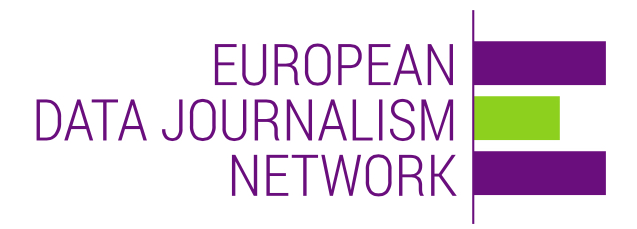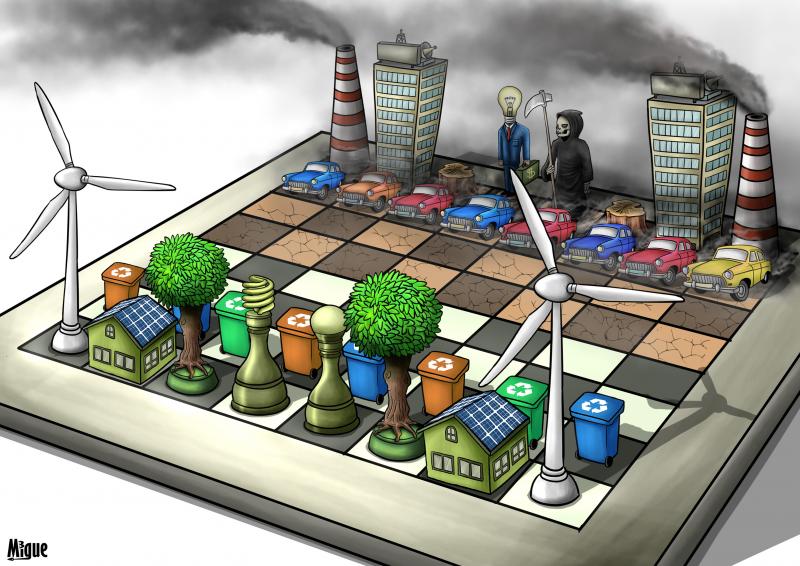Five years after its launch in 2019, the European Green Deal finds itself caught in a surprising paradox. The agreement is the subject of polemics across Europe and yet almost nobody can say how much of it has been implemented!
This is partly due to a lack of clarity about the kind of progress made: a European Commission document describes the progress made so far, but mixes up institutional and practical advances. Supporters and detractors alike find themselves at a loss to answer questions that are nonetheless essential: is the pact actually achieving its objectives, beyond their formal transcription into legislative proposals? Are things on the right track? What might be its gaps, weaknesses, and imbalances?
To shed light on the situation, we are offering decision-makers and the general public a statistical tool that is easy to use, free to access and as comprehensive as possible: the Green Deal Compass. It consists of 14 indicators subdivided into four major areas or "pillars" of the Green Deal: climate and energy, resources and pollution, agriculture and food, biodiversity and ecosystems. The indicators all feature prominently in European legislation.
They are therefore subject to reliable and up-to-date assessment by the European statistics office Eurostat, which enables us to compare their current state with the agreed objective. The indicators are intended to be updated in the months and years to come, but they already constitute a sufficiently robust set of data to allow an initial assessment of the European Green Deal's trajectory.
An essential part of our approach is to quantify at the level of the European Union as a whole, taking the indicators as averages for the 27 member states. With this resolutely European approach, we aim to resist the temptation to turn the Green Deal into a beauty contest between "good students" and"dunces".
Specific national characteristics often make such country-level comparisons meaningless. More fundamentally, the logic of rivalry and competition does enough damage in fiscal, budgetary and social matters to warrant avoiding it in the field of ecological transition. The Green Deal is a common strategy for the decades to come. It is at the level of the European Union that its success (or failure) is best measured.
The "Green Deal Radar" is the aggregate indicator we have devised to provide an at-a-glance assessment of the state of the Green Deal. It shows the state of progress of the four pillars of the European strategy.
The four pillars of the Green Deal are positioned and compared on a scale from 0 to 100%, with 0 indicating that no progress has been made and 100% that all 2030 targets have been met.
Two telling facts emerge from this graph: the first is that the Green Deal is on track in terms of the existing indicators. Progress towards the 2030 targets ranges from two-thirds (for the “Energy and climate” pillar) to a quarter (for “Agriculture and food”). But the second reality is that the Green Deal is heavily skewed in favour of its energy-climate pillar. The other three pillars show progress towards their targets of only a quarter to a third. (“Agriculture and food” show the least progress, which sheds useful light on the heated discussion of environmental regulations that has been agitating farming circles in recent months.)
We can then look in more detail at the specific dynamics of each of these pillars to gain a better understanding of the changes underway (in the light of the existing indicators, which, it should be remembered, are still only partial).
The energy-climate pillar has the most objectively quantifiable indicators enshrined in European legislation (six in total). That is hardly surprising given that it is at the heart of the strategy set out in December 2019, defined by the ambition to "be the first climate-neutral continent". Unfortunately, this particular goal is coming up against a reality revealed by the data.
While the reduction in greenhouse gas emissions is undeniably large for the EU as a whole, with more than half the distance covered towards the 2030 target, the trend post-Covid-19 is less impressive. Emissions rebounded sharply in 2021 (and were not offset by the fall in 2022). Their reduction remains too slow, according to the European Environment Agency.
Above all, the EU's carbon-neutrality strategy assumes that the remaining gross emissions (which will not be reduced to zero) will be absorbed by carbon sinks. However, the indicator for the absorption of emissions by carbon sinks has fallen sharply over the last decade as a result of the climate crisis itself (which, among other harms, causes giant forest fires and degrades ecosystems). Our Green Deal Compass therefore highlights a serious flaw in Europe's strategy, one that is not sufficiently well known. The pact is focused on its energy and climate objectives and does not pay enough attention to the vitality of ecosystems, which will ultimately determine its success.
An analysis of the "Resources and pollution" pillar reveals another imbalance: although emissions are dropping, the consumption of natural resources stopped falling ten years ago. The European economy is therefore far from being sustainable. Similarly, the “Biodiversity and ecosystems” indicators show real and encouraging progress towards the 2030 objectives on conservation of land and sea areas, but also a decline in bird species (reflecting a wider erosion of the EU’s biodiversity, particularly in insect and amphibian populations) that has been unrelenting since the early 1990s and has even accelerated over the last two decades. There are obviously other imbalances that cannot be measured using our tool, starting with the lack of social ambition in the Green Deal as it stands today.
The Green Deal Compass is therefore an imperfect assessment tool. It needs to be improved and expanded as the Green Deal indicators become more precise and numerous. Nonetheless, the tool does shed objective light on a number of ongoing controversies and gives us a clear answer to the question posed at the start of this article, "Is the European Green Deal achieving its objectives?”
The Compass allows us to say that it is, albeit in an unbalanced way – which may yet jeopardise its still fragile success.
Eloi Laurent, Jérôme Creel and Emma Laveissière, will be the guests at our next Live event, on Thursday 2 May at 1.30pm (CEST). Click here to register.

In partnership with the European Data Journalism Network
Was this article useful? If so we are delighted!
It is freely available because we believe that the right to free and independent information is essential for democracy. But this right is not guaranteed forever, and independence comes at a cost. We need your support in order to continue publishing independent, multilingual news for all Europeans.
Discover our subscription offers and their exclusive benefits and become a member of our community now!












